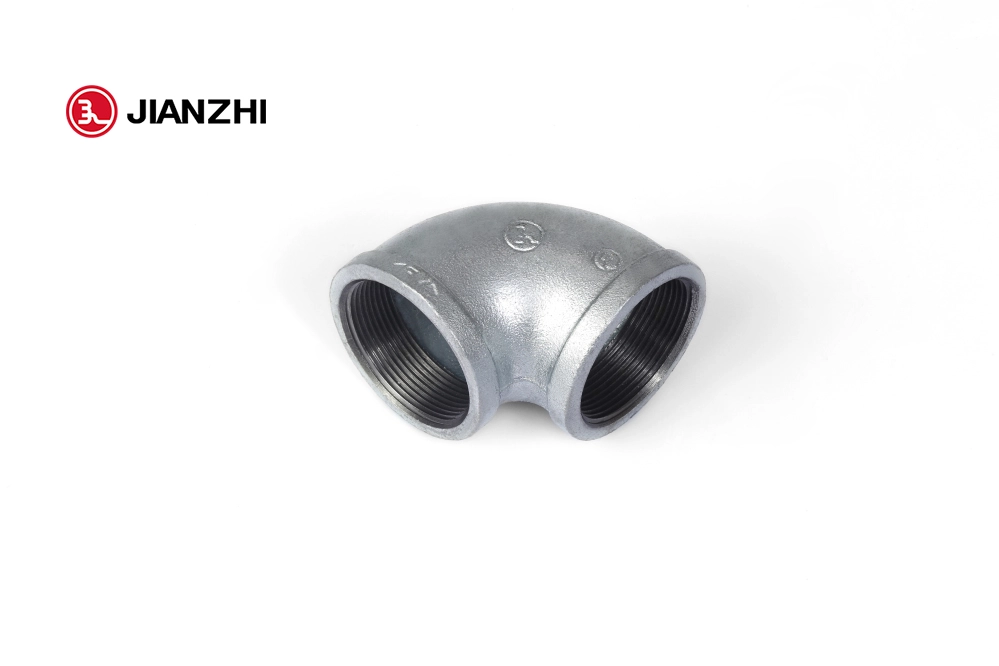When it comes to installing 90-degree pipe elbows, plumbing professionals follow several best practices to ensure proper installation and optimal performance.
Here are some common best practices:
Proper Alignment: Ensure that the 90-degree pipe elbow is aligned correctly with the pipes it is connecting. Misalignment can lead to flow restrictions, increased pressure drop, and potential leaks. The pipes should be cut squarely and deburred before inserting them into the elbow fittings.
Adequate Support: Provide adequate support for the pipes and elbows to prevent undue stress or strain on the joints. Proper support helps maintain alignment and prevents sagging or movement that could compromise the integrity of the installation.
Tightening and Sealing: Follow manufacturer recommendations for tightening and sealing connections. Use appropriate tools to tighten threaded connections securely without over-tightening, which can damage the fittings or result in leaks. Apply thread sealant or Teflon tape to threaded connections to ensure a watertight seal.
Welding or Solvent Welding: If using welding or solvent welding methods for plastic or metal pipe elbows, follow the manufacturer’s instructions and the recommended techniques for joining the materials. Proper surface preparation, correct application of welding solvents or adhesives, and sufficient curing time are crucial for achieving strong and reliable joints.
Consider Expansion and Contraction: Account for thermal expansion and contraction of the piping system when installing 90-degree pipe elbows. Allow for adequate space and incorporate expansion joints or flexible connectors as necessary to accommodate temperature changes, which helps prevent excessive stress on the elbows and the overall system.
Clearances and Accessibility: Ensure that there is sufficient clearance around the 90-degree pipe elbows for maintenance, repairs, or future modifications. Accessibility is important for troubleshooting and inspecting the system. Consider the placement of the elbows in relation to walls, floors, and other structures to allow for easy access if needed.
Pressure Testing: After installation, perform pressure testing according to the applicable codes and standards to verify the integrity of the system and identify any leaks or weaknesses. 90 degree pipe elbow Follow the recommended procedures for pressure testing and observe safety precautions during the testing process.
Compliance with Codes and Standards: Adhere to the plumbing codes and standards applicable in your region. Familiarize yourself with the specific requirements regarding materials, jointing methods, support spacing, and other relevant factors to ensure compliance and a safe installation.
It is important to note that these best practices serve as general guidelines, and specific installation requirements may vary depending on the type of piping system, local codes, and manufacturer recommendations. It is always advisable to consult with plumbing professionals and follow the manufacturer’s instructions for the specific 90-degree pipe elbows being used in your installation.
What are some common materials used for 90-degree pipe elbows in plumbing installations?
In plumbing installations, 90-degree pipe elbows are available in various materials to suit different applications and piping systems. The choice of material depends on factors such as the type of plumbing system, the nature of the fluid being transported, compatibility with other components, and cost considerations.
Here are some common materials used for 90-degree pipe elbows in plumbing:
PVC (Polyvinyl Chloride): PVC is a widely used material for plumbing applications due to its affordability, durability, and corrosion resistance. PVC 90-degree elbows are commonly used in residential and commercial plumbing systems for water supply, drainage, and venting. They are available in different schedules (thicknesses) to accommodate various pressure and temperature requirements.
CPVC (Chlorinated Polyvinyl Chloride): CPVC is a thermoplastic material that offers enhanced heat resistance compared to standard PVC. CPVC 90-degree elbows are suitable for hot water distribution systems, such as in residential and commercial plumbing applications. They are known for their ability to handle higher temperatures and are compatible with CPVC pipes and fittings.
Copper: Copper is a traditional plumbing material known for its excellent corrosion resistance and durability. Copper 90-degree elbows are commonly used in water supply lines, particularly for potable water applications. They are available in both soldered (sweat) and compression fitting options, providing reliable connections.
Stainless Steel: Stainless steel is valued for its high strength, corrosion resistance, and suitability for various plumbing applications. Stainless steel 90-degree elbows are commonly used in industrial and commercial plumbing systems, especially in applications where resistance to high temperatures, chemicals, or corrosive environments is required.
Brass: Brass is a metal alloy known for its excellent corrosion resistance and machinability. Brass 90-degree elbows are commonly used in plumbing systems for their durability and aesthetic appeal. They are often utilized in water supply lines, compressed air systems, and certain industrial applications.
Ductile Iron: Ductile iron is a strong and durable material used in plumbing installations where high mechanical strength is required. Ductile iron 90-degree elbows are commonly used in larger pipe sizes for water supply lines, wastewater systems, and other industrial applications.
Polypropylene (PP): Polypropylene is a thermoplastic material known for its chemical resistance and high-temperature stability. PP 90-degree elbows find applications in specialized plumbing systems, such as chemical handling, industrial waste systems, or certain laboratory installations.
It’s important to consider factors such as the specific plumbing application, compatibility with other components, local codes and regulations, and the manufacturer’s recommendations when selecting the appropriate material for 90-degree pipe elbows in a plumbing installation.
